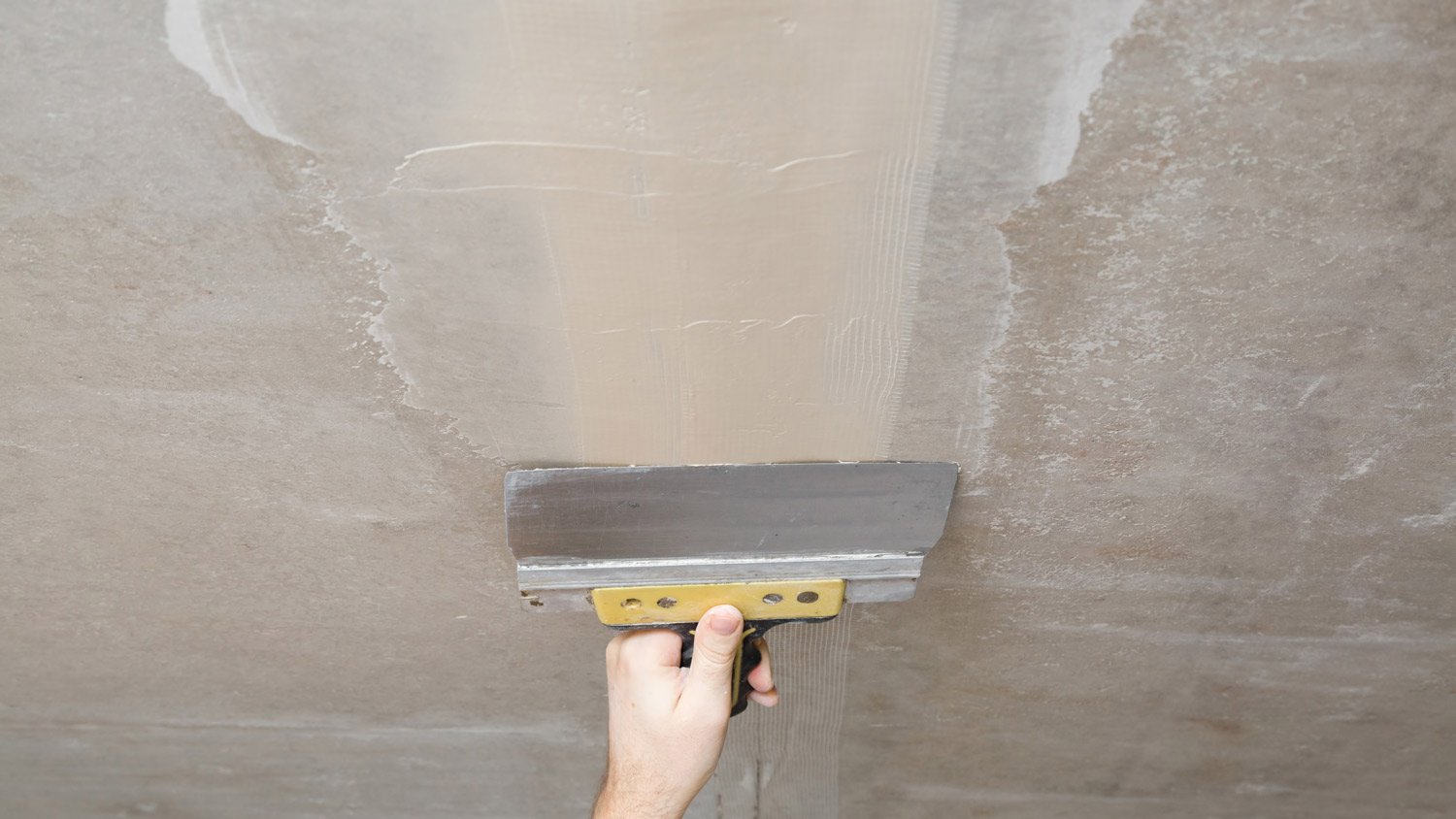
Popcorn ceiling removal costs depend on the size of your ceiling and any additional services like asbestos removal and resurfacing. Learn all the costs here.
It can be a long wait, but it’s worth it in the end


Plaster needs time to dry to the touch, then fully cure, after application.
Humidity, temperature, and ventilation all affect plaster drying and curing times.
You need to let plaster cure completely before moving on to the next phase in your project, such as painting or wallpapering.
Forget plastic, it's plaster that's fantastic. Often considered a precursor to drywall, plaster still has its place in modern homes, as it's beautiful and eco-friendly. If you decide to use it, you need to know how long the plaster takes to dry, as its drying time affects what you can do next and when you can do it.
| Plaster Drying vs. Curing | Time | Description |
|---|---|---|
| Drying | 1–4 hours | Plaster becomes dry to the touch but is not completely set |
| Curing | 3–5+ days | All moisture has evaporated, and you’re ready to finish, paint, or wallpaper |
It’s important to understand the difference between plaster drying and plaster curing. When plaster dries, moisture evaporates from the surface of the material. The plaster becomes dry to the touch and appears set.
Curing is a longer, more involved process. All the moisture evaporates when plaster cures, leaving a hard, completely dry material. "Dry" plaster may still contain some moisture beneath the surface. It will look and feel dry, but if you sand the plaster, you may discover it's still wet.
Painting or otherwise treating a plaster wall before it's fully cured can affect your final results. As moisture seeps out of the plaster, it will affect the finish, causing your paint to chip or your wallpaper to peel away.
Finishing the wall before the plaster is cured also affects the integrity of your project. The paint or wallpaper can trap the moisture inside the wall, making the plaster more likely to crumble and deteriorate. Before you move on to the next step in your project, such as painting your walls, give your plaster ample time to dry and cure.

Plaster needs one to four hours to dry to the touch. Each layer needs a few hours to dry if you're applying an undercoat or finishing plaster. A special plaster, such as lime plaster, may need up to one week to dry to the touch.
Plaster needs three to five days to cure on average, but in some cases, it may take up to a couple of weeks. When plaster is fully cured, all the moisture is gone from the material, leaving it rock solid.
If you're patching a plaster wall, the patched area may cure in a couple of days. If you're coating the entire wall in plaster or building a plaster wall from scratch, you may need to wait two weeks or longer for it to cure.
Several factors affect how long plaster takes to dry and cure, including:
Humidity levels: Water must evaporate out of the plaster to dry. When humidity levels are high, it takes longer for water to evaporate, leading to longer drying and curing times.
The amount of plaster: If you apply the plaster in thick coats, it will need more time to dry, as there's more moisture and the water has more layers to travel through.
Temperature: Ambient temperature also affects drying times. Colder temperatures slow down drying, and hotter temperatures speed it up. The ideal temperature for plaster drying is a comfortable room temperature. When a room is too hot, the plaster can dry too quickly, causing cracks.
Airflow: Good ventilation can reduce plaster drying times, as decent airflow helps moisture travel out from the material more efficiently. Opening a window may be all you need to do to improve ventilation and reduce drying time.
Painting a plastered wall before the plaster is fully dried and cured can affect the quality of the paint job or the plaster itself, depending on the stage of the drying process. If you paint before the plaster is dry to the touch, the paint won't adhere well to the material and will flake or peel off. You may also notice adhesion problems when you apply the paint or as it dries.
Painting too soon can affect the quality of plaster. If the plaster is dry to the touch but not fully cured, the paint can create a barrier, preventing the remaining moisture from escaping. The trapped moisture can weaken the plaster, causing it to crumble.
As plaster dries and cures, its appearance changes:
When you apply wet plaster, it's brown.
As it dries, the plaster turns light pink.
It's fully cured once the entire surface is light pink, with no brown spots or wet-looking areas.
From average costs to expert advice, get all the answers you need to get your job done.

Popcorn ceiling removal costs depend on the size of your ceiling and any additional services like asbestos removal and resurfacing. Learn all the costs here.

The eye-catching character of a coffered ceiling can really set your room design apart. This guide breaks down coffered ceiling costs to help you budget.

The cost of plastering walls and ceilings depends on the room size and ceiling height. Our tips can help you estimate an accurate cost.

Hairline cracks and spiderweb cracks are just two of many types of ceiling cracks. Read this guide to learn which ceiling cracks are serious and need repairs.

Tired of looking at the crack down the wall? Plaster can be tricky to work with, but you can learn how to fix cracks in plaster walls with this guide.

Plaster has been around for a very long time. Here’s what you need to know about this ancient and adaptable building material.